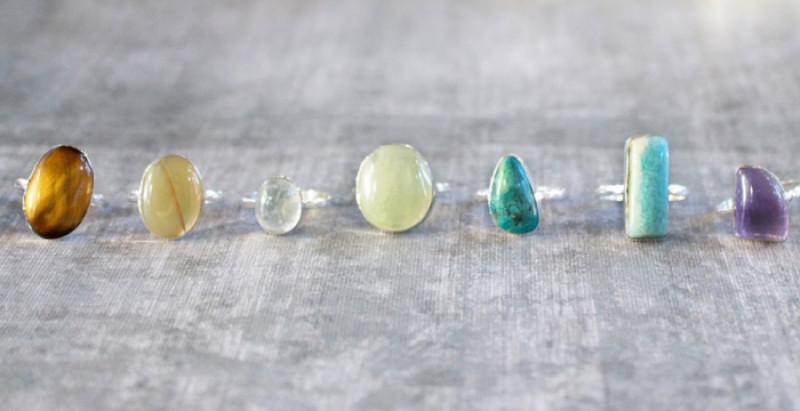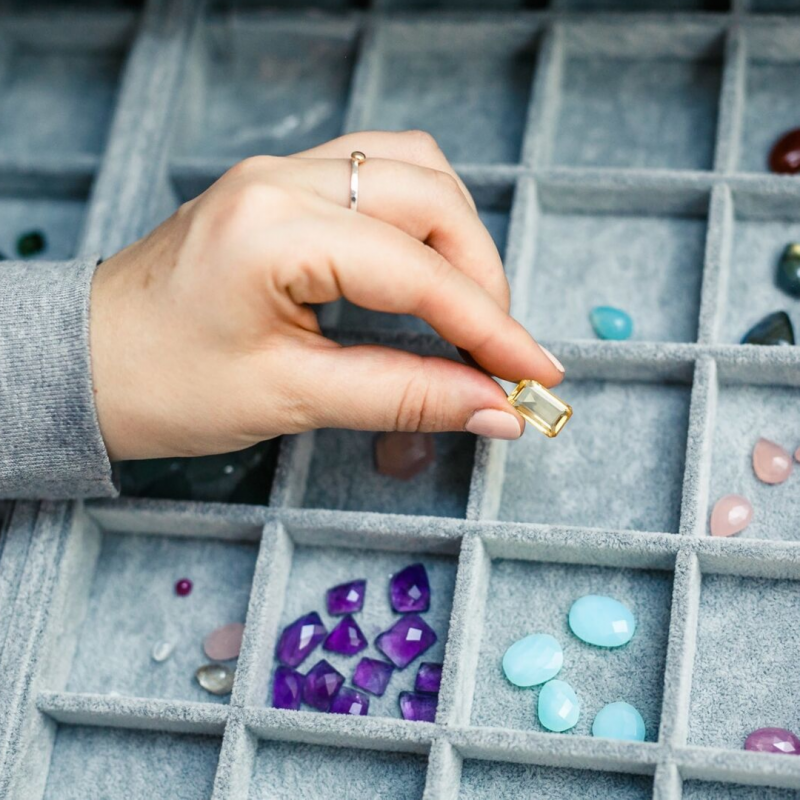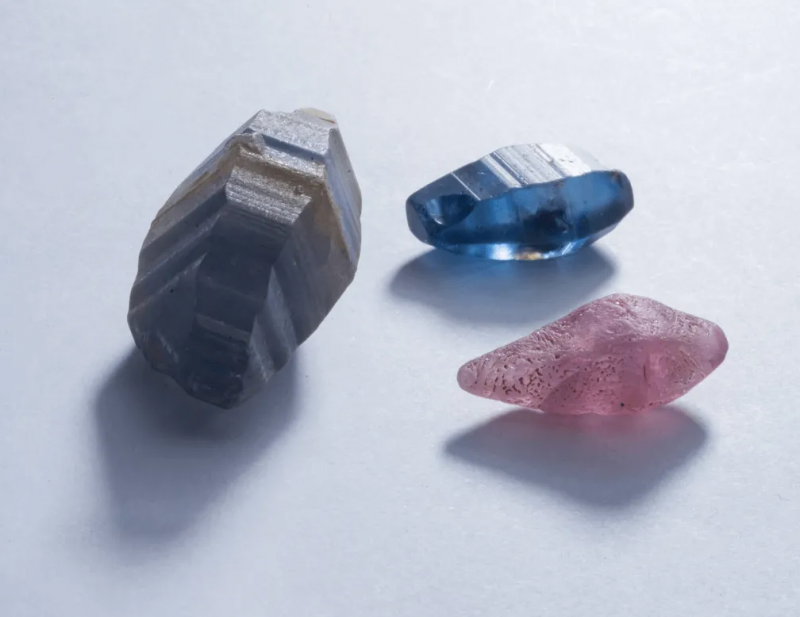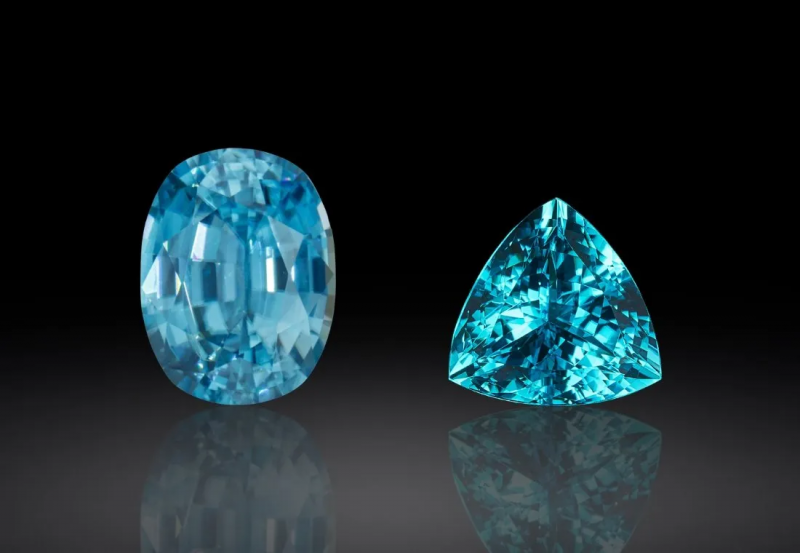
Demand for gemstones has meant that many mines are already depleted, while others are fast running out of reserves. Gemstones take millions of years to form, and current demand means that many of these minerals are becoming more scarce.
It is estimated that diamond reserves will be depleted within 60 years unless more deposits are discovered. The rarer diamonds become, the higher their value will be.
In 2021, the global diamond market was worth $94.96 billion. And it is projected to reach $139.91 billion by 2030. Nevertheless, diamond mining impacts the environment.
Why are there sustainability problems with gemstones?
Mining is invasive and can not only harm the environment but can be dangerous to the workers involved too.
Underground mining can lead to water contamination and chemicals leaching into the environment. Toxins are released during mining, and hazardous chemicals are used to extract diamonds and other gemstones.
There are also concerns about worker safety in cramped and dangerous conditions sometimes. Plus, there may be ethical concerns over fair pay and conflict diamonds.
One way to ensure your gemstones are ethical is to pair costume jewelry with outfits, but fortunately, there are sustainable gems available.
Which gemstones are the most sustainable and ethical?
Several gemstones fit the bill when it comes to sustainability and ethics. The ones listed here are just a short selection but if they don’t suit your needs, you should be able to find more by researching sustainable gemstones.
Moissanite
Natural moissanite is one of the rarest minerals on the planet. Moissanite was first discovered in fragments of a 50,000-year-old meteorite. There are no natural reserves on Earth.
However, moissanite today is created in laboratories and is readily available to jewelers. Moissanite is very popular for wedding rings today, and since it is lab-grown, this gemstone is very sustainable. A visit to moissanite rings shows the wide range of possibilities for this extremely ethical gemstone.
Natural diamonds and lab-grown diamonds

Mined diamonds can be problematic, but there are ways to avoid purchasing conflict gemstones.
The Kimberley Process ensures that conflict diamonds are removed from the majority of the world’s trade. Now, about 99.8% of global conflict diamond trade is blocked. However, mined diamonds cannot ever be sustainable as there are finite reserves.
Lab-grown diamonds
A much more sustainable way to produce diamonds is through a similar technique used by moissanite.
Lab-grown diamonds are made rather than mined, so this means that there are no environmental concerns. However, due to an almost endless supply, lab-grown diamonds have less value than natural stones. But, on the positive side, lab-grown diamonds are more affordable.
Sri Lankan sapphires

Sapphires that originate from Sri Lanka can be said to be both ethical and environmentally friendly.
No precious stone can ever be said to be sustainable, but mining techniques used in Sri Lanka mean there are fewer environmental concerns.
Sri Lanka has fair labor laws to look after miners, and only small-scale mining by hand is used to extract sapphires in the country.
Sustainable pearls
Pearls are as classic as diamonds. A beautiful pearl necklace outfit can look stylish and classy, but modern. And pearls can be sustainable.
Cultured pearls, and pearl farming, involve very careful control of the surrounding ecosystem. It is said that cultured pearls may be the most sustainable gemstone in the world.
Australian opals
Sustainability is a problem with any mined gemstone, but Australia goes to lengths to protect its opal industry.
Nearly all the world’s opals come from Australia, but miners are limited to how many claims they hold and they must be licensed. There are studies in place to minimize the impact on the environment, and strict conditions regarding safety must be met.
While opals can’t be said to be sustainable, there are strong environmental and ethical practices in place.
How can you be sure your gemstones are ethical?
When searching for ethically sourced jewelry it pays to do some research online. For example, an ethically sourced moss agate ring from moissaniterings.us is easy to track down with the use of Google.
Ask your jewelers about the origins of your chosen gemstones. The Kimberley Process includes certification to prove origins and that the gemstones have met the KP criteria.
Of course, if your gemstone is made in a lab, then you already know it is sustainable, and it should almost certainly be ethical too.

Summary
Choosing lab-made gemstones over mined varieties means there are far fewer environmental issues. Lab-grown gems are far more affordable too.
However, not all gemstones can be replicated in a lab yet, so the alternative is to find gems that are ethically mined. If you can find gems that are ethically sourced, you will be sure that the workers are fairly treated, and have safe working conditions, and the impact on the environment has been considered.

















